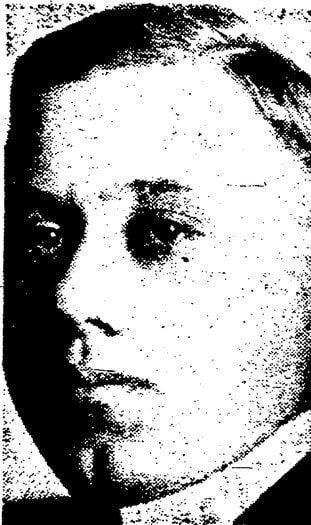The Torch Murder Of 1933
Originally published in The Rock River Times.
It had been a good day that Sunday, August 13, 1933. Forty-one-year-old Earl Hanson had enjoyed the day with his 12-year-old daughter, June. They attended church services and went to the theater. Earl headed north on Main Street to take June back to her mother’s home at about nine o’ clock in the evening.
Earl and his wife, May Mudler, had divorced on December 22, 1932, after a 12-year-marriage. At first, Earl believed May was happy, especially after June was born in 1922 and then little Doris came in 1923. There was a lot of strain in the marriage especially after they realized that Doris was developmentally disabled. They made the difficult choice to have Doris placed in an institution.
So on that August night, Ed drove his little girl back to the home they had once shared. June Hanson kissed her father and skipped into the house. She was looking for her mother when she noticed a bright light coming from outside.
June stepped back outside and saw an image that no child should have to see. She must have been horrified to see Earl crawl from the car completely engulfed in flames.
June’s screams soon brought neighbors running. The first man to arrive saw a burning figure twisting on the ground. The fire was quickly put out but there was little that could be done. Earl Hanson was dead.
The police arrived and at first they thought they were dealing with a car that had malfunctioned. They questioned everyone involved. May Hanson, Earl’s ex-wife, claimed that she was in the basement when she saw a flash of light through one of the windows.
There were several warning signs to the initial police officers. They were concerned enough to summon Chief Deputy Millard and the Coroner Walter Julian to the house. As the police explored the crime scene, a porcelain bowl was discovered in the yard, hidden in tall grass. It was blackened and smelled of gas.
The detectives continued to search the yard and uncovered a box of matches and a gas can that contained a small amount of gas. Police began to realize that Earl’s death was no accident. They would later call it one of the most bizarre murders that Winnebago County had ever seen.
The first thing police officers noticed when they questioned May was that her hair, face, eyebrows and neck were singed and burned. May explained this by claiming that she got close to the car to confirm that her daughter was not inside.
May also answered the authority’s questions in a very strange manner. One reporter described it like May was reciting a recipe instead of describing the horrible death of a human being. May admitted that she owned the gas can and had purchased gas that afternoon. She claimed she was trying to get her own car started. The car had not run in over a year.
The porcelain bowl also belonged to May. She used it earlier in the day to water the chickens. May stated that she had no idea knowledge of how it had gotten into the yard.
The authorities began to comb through all aspects of Earl Hanson’s life. Earl was a sales executive at Ingersoll Milling Machine Company. He was well respected and liked at his job. Robert Gaylord, the President of Ingersoll, handed the police what would become the main piece of evidence in the case. It was a handwritten letter that May had sent Earl that described how much she loathed him and ended with a death threat. The letter frightened Earl so much that he gave it to Robert for safekeeping in case anything ever happened to him.
The police knew that they had their killer but they found it inconceivable that this tiny woman would kill in such a horrific manner. The police and coroner worked together to put together a theory of what happened that fateful August night.
Earl pulled into the driveway and waited for June to enter the house. May hid in the bushes next to the driveway and when Earl stopped at the end of the driveway, she stepped from the shadows and splashed the contents of the porcelain bowl onto Earl. Then she lit a match and threw it into the car. She had no idea that the gas would cause the flames to billow up burning her flesh and hair. May calmly moved into the yard as June came out to see her father struggling against the flames that consumed him.
State’s Attorney Nash prosecuted May Hanson in what the newspapers dubbed as the “Torch Murder”. The trial lasted 11 days and consisted of 39 witnesses for the state and six witnesses for the defense. The most riveting testimony came from the Hanson’s daughter, June who staunchly defended her mother’s innocence.
May was found guilty and sentenced to 14 years. She was transferred in May of 1934 to Dwight’s Correctional Center.
Doris died in the Nebraska institution in 1940. June was raised by May’s sister, Florence. June would eventually marry and move to Vermont where she passed away in 1994.
Photos – Rockford Register-Republic.
Copyright © 2016 Kathi Kresol, Haunted Rockford Events


